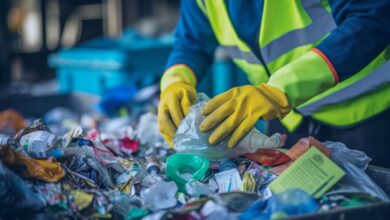
A Guide to Work Equipment Hazards and Control Measures
Every year workers face several accidents, injuries, or ill health from using work equipment in the work environment including in different sectors like construction, manufacturing, warehouse, and agriculture.
The improper use of the work equipment may result in serious fatalities if workers are unable to use them correctly and without any guidance.
This puts a legal duty on employers to identify any health hazards related to the use of the equipment at work and implement vital control measures to mitigate the risk.
This content piece will guide on the risks related to the use of work equipment, vital controls, and current legislation to prevent the workers.
Table of Contents
What is Work Equipment?
Work equipment includes machinery, tools, or equipment used by an employee at work like hammers, lifting equipment, forklift trucks, etc. Other examples include gas cylinders, ladders, portable power tools, or floor polishing machines.
All these work equipment comes under the Provision of Use of Work Equipment Regulations. (PUWER) 1998.
Along with this, all the lifting equipment has to meet the Lifting Operations and Lifting Equipment Regulations (LOLER) 1998.
These regulations apply to employers and self-employed workers and require them to ensure the safety of their workers working around them.
The Health and Safety at Work Act puts a legal duty on employers to prevent their workers from harm by any injuries, accidents, or ill health that occur as a result of their work operations. Therefore, they should assess, control, and minimize the risks to ensure workplace safety.
Hazards from Work Equipment
The injuries or hazards caused by work equipment can be divided into five categories:
- Entrapment. This type of injury occurs when body parts are caught in parts of equipment while working
- Impact. It occurs when a worker’s body is crushed in moving parts or by items being processed
- Contact. Such injuries occur when a worker’s body touches sharp edges, hot surfaces, or abrasive wheels
- Entanglement. These hazards occur when hair, clothing, or jewelry is caught in parts of the machine
- Ejection. Such injuries occur when working equipment could hit the body and injure the worker.
Managing the Risk
Using tools, machinery, and equipment as part of work is necessary for almost every workplace: therefore, the risks related to equipment at work must be managed and controlled.
Employers can minimize the risk by selecting the right equipment for work, properly maintaining it, and training the workers correctly. Where there are needed employers must undertake appropriate work equipment risk assessment to identify, control, and eliminate the risk.
In addition to the work equipment risk assessment, managers and supervisors must also assess the location, worksite conditions, and how the equipment is used at work.
These factors can help them recognize the nature of the hazard and what preventive measures can eliminate the risk.
Health & Safety Management
Employers and managers can implement the below practices/steps to manage the safety and health of their staff.
1. Selection of the Work Equipment
The selection of equipment for work is the key component of maintaining a worker’s safety. Choosing the wrong work equipment can also result in ergonomic risks.
Therefore, employers and their workers need to be careful while picking the right tool for work. The equipment must be suitable for the intended work and the working conditions must also be suitable to ensure everyone’s safety.
2. Maintenance & Inspection
The second step is to inspect the equipment regularly and maintain it in good order so that it does not expose workers to any risks. This involves the routine maintenance, repair, and assessment of the work equipment.
3. Responsibilities
It is the responsibility of employers and safety managers to provide safe tools and equipment to the workers for use and ensure the work equipment’s safety.
The responsibility falls on the employees as well to report any issue regarding work and the tools they are using, so that immediate action can be taken to mitigate the risk.
Training for Employees
Another effective way to control work equipment hazards is by providing vital training to the workers and employees. There are different training courses employers can offer to their staff like abrasive wheels training, hot works training, sharps training, maintenance safety training, hand-arm vibration training, and more.
Bottom Line
Different tools, work equipment, or machinery used for work can result in serious damage to the health and safety of workers and can lead to lifelong ailments. Those in managerial roles need to be accountable for the prevention of these hazards and health risks to their staff.
The law requires both employers and employees to perform their part in preventing work equipment hazards, and control, and minimizing them so that safety standards can be fulfilled. And a safe and secure workplace is provided for everyone to live and work freely. This post has covered the basics to work safely.








